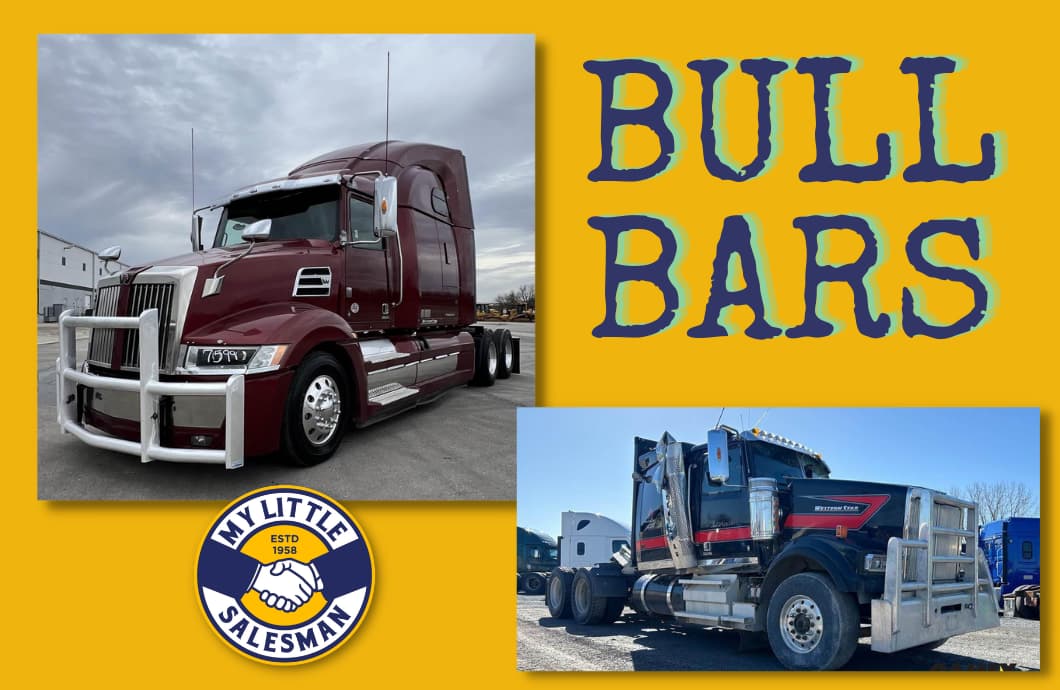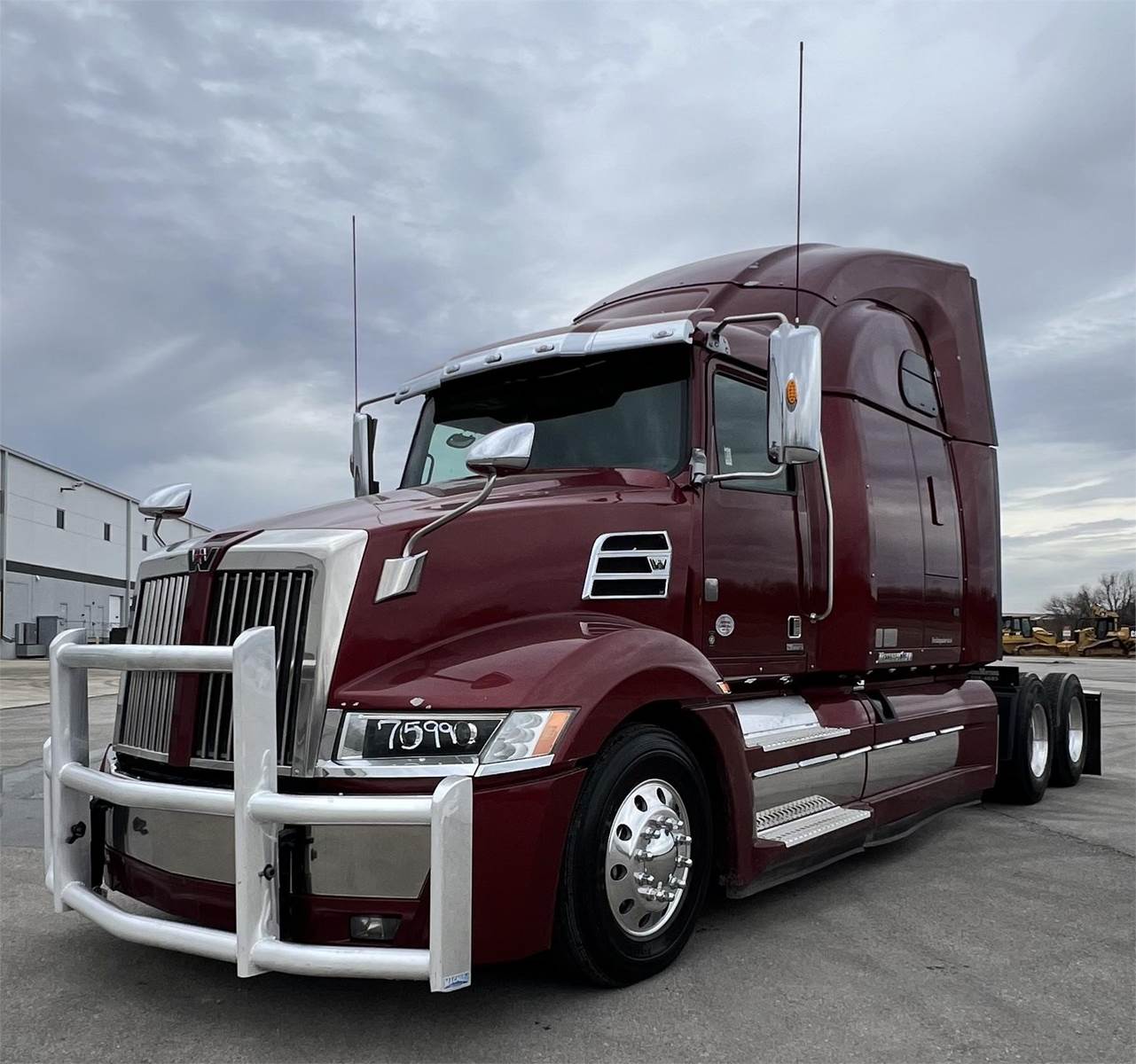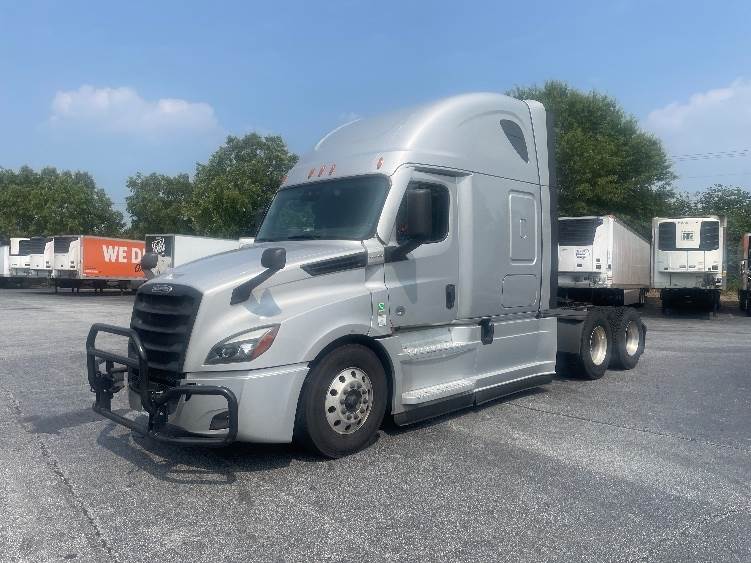
Table of Contents
A lone trucker cruises down a remote highway at dusk. Suddenly, a deer darts out from the shadows. There's a sickening thud. The impact sends shockwaves through the massive semi-truck.
The driver, heart pounding, knows it could have been much worse. Depending on where the impact occurs, a collision with an animal like a deer can cause serious damage to the semi truck and potentially injure the driver.
This scenario encapsulates the primary purpose of front-mounted grille guard, sometimes called "bull bars" depending on the style of truck of setting—enhancing the resilience of semi trucks against impacts with wildlife and other obstacles.

Bull bars—also known as grille guards, deer guards, brush guards, push bars, Moose bumpers, or even “Kangaroo bars” down in Australia—are often made of steel or aluminum and designed to absorb shock and minimize damage during collisions. For the purposes of this article, we will largely be referring to these as "bull bars."
They are particularly useful for protecting the crucial front ends of trucks—typically containing the engine, radiator, and other components integral to the function of the tractor.
Research and anecdotal evidence from truck drivers highlight that bull bars effectively reduce damage from minor to moderate collisions. However, it's essential to balance safety enhancements with potential risks, as bull bars can alter the dynamics of a crash.
Sometimes, the stories say more than any statistic ever can. "He hit a bull at night... truck went up in flames," one driver recalls, explaining why his company finally started installing bull bars.
For others, it's the moose sent flying at highway speeds, the truck only needing a headlight and a weld after. There's no understating the impact these guards can have.

But are they foolproof?
"Aluminum's no good," warns a logger, "folds like a soda can!" Another points out, "If the bar dents but your radiator's fine, that's a win." It's that balance between saving you thousands in repairs and not being a cure-all.
Then there's the regional factor. "In Australia, you'd be crazy to drive without one," a trucker states, painting a picture of kangaroos and wild pigs galore. Up in Canada, it's moose—a glancing blow can still mean a busted headlight, but better than a totaled truck.
With truckers, cost is a factor. One driver argues that even hitting several deer a year, the bar pays for itself compared to the repairs. Others worry about the extra weight or how some designs block access when it's maintenance time.
Bottom line?
The arguments are fairly split with users leaning in the bars’ favor. As one veteran driver put it, "Depends on the night, the animal, and how lucky you feel."
Whether they see them as ugly but essential, or an unnecessary add-on, truckers won't soon forget the impact of when bull bar meets beast, for better or worse.
For fleet decision-makers, the key considerations for investing in bull bars include cost, potential savings on repairs, and improved vehicle uptime.
Considering the upfront cost versus the long-term savings from fewer repairs, bull bars present a compelling case for fleets—especially those operating in areas with high risks of animal collisions.
What is the difference between a bull bar and a brush guard?The difference between a bull bar and a brush guard lies in their shape, coverage, and focus.
- Bull Bar: A-shaped frame protecting primarily the center of the vehicle's front. It often includes a skid plate and may be designed for mounting lights or a winch.
- Brush Guard: H or T-shaped frame offering broader front-end protection, including headlights. While providing less central strength, they better deflect branches and light debris.
In short: Bull bars offer focused central protection while brush guards prioritize wider coverage.
What is the difference between a smart bar and a bull bar?
Smart bars and bull bars are both frontal vehicle protection accessories, but they differ in these key ways.
- Material:
- Smart bar: Made from roto-molded plastic—durable but lightweight.
- Bull bar: Traditionally made from steel or aluminum—heavier, stronger.
- Pedestrian safety:
- Smart bar: Designed to absorb impact, potentially reducing injuries in collisions.
- Bull bar: Rigid steel can increase injury severity in pedestrian accidents.
- Weight:
- Smart bar: Significantly lighter, impacting fuel economy less.
- Bull bar: Heavier, may require suspension upgrades.
Choosing the right option depends on your needs. Smart bars are good for lighter protection and safety considerations, while bull bars offer maximum strength for heavy-duty off-roading or highways known for animal contact.
How much does a bull bar cost?
Bull bars for semi trucks can vary significantly in price.
Cost: Bull bars for semi trucks typically cost between $1,000 and $7,000.
Factors affecting price:
- Material: Stainless steel is more expensive than aluminum.
- Size and Design: Larger, more intricate designs cost more.
- Brand: Well-known brands may have a premium.
Should You Invest in Bull Bars?
Bull bars serve as a protective investment for semi trucks—enhancing safety and potentially reducing collision-related costs. For fleets operating in areas prone to wildlife or where minor collisions are common, bull bars are a strategic addition.
By understanding the benefits and considerations of bull bars, fleet managers and truck owners can make more informed decisions that enhance safety and operational efficiency.
Your Source for Semi-Trucks, Trailers, and Accessories
If you're in the market for either bull bars for your truck fleet, a fleet already equipped with bull bars, or anything in between, your friends from My Little Salesman can help. Since 1958, My Little Salesman has been connecting buyers and sellers of heavy equipment, commercial trucks, trailers, accessories, attachments, and anything else needed to get tough jobs done.
Look Through Semi-Trucks for Sale Today and Get Moving